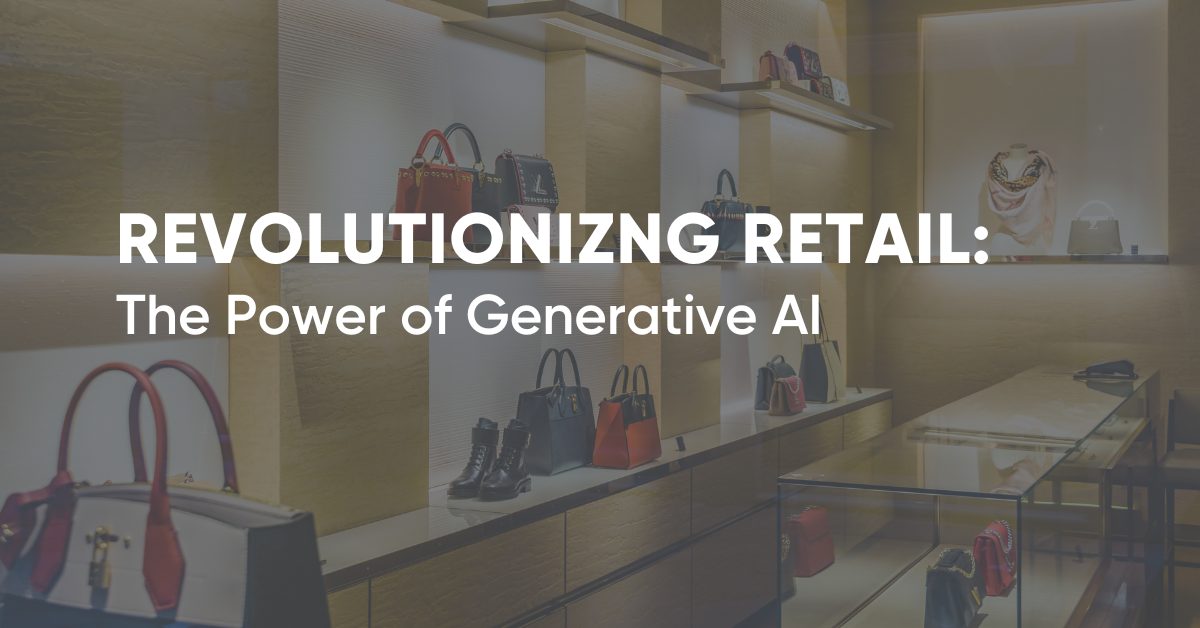HIGHLIGHTS
- GenAI is helping both online and offline retailers
- Personalization tools increase brand engagement
- Retailers of all sizes and categories can benefit from AI
- Increased consumer confidence is driving increased conversion and profits
The retail industry has witnessed a paradigm shift in consumer behavior, with a rapid increase in online shopping and a growing demand for personalized experiences. To stay competitive in this evolving landscape, retailers are turning to cutting-edge technologies. One such game-changer is generative artificial intelligence (GenAI). With its ability to create and innovate, GenAI is revolutionizing both the online and offline retail industries, offering a multitude of benefits to retailers and customers alike.
While many of the early adopters are in the fashion industry, GenAI can be applied to all retail categories from clothing to groceries to electronics, and everything in between. And with the growing options for AI tools, it is now accessible to retailers of all sizes.
Online Use Cases
Online retailers have historically led the way in adopting new technologies, and GenAI is no exception. While many items can be purchased confidently online, some retail categories such as clothing and jewelry still carry risks when consumers can’t physically inspect the items before purchase. GenAI tools can help consumers gain confidence that they are making the right decisions, which will increase conversion rates and drive profits.
Here are just some of the ways online retailers are using GenAI:
-
- Personalized Recommendations: Generative AI algorithms can analyze vast amounts of customer data, including browsing history, purchase patterns, and demographic information, to generate personalized recommendations. By understanding customer preferences, retailers can offer tailored product suggestions, enhancing the online shopping experience.
- Virtual Try-On: Virtual try-on is becoming increasingly popular in the fashion industry. With new GenAI tools, retailers can create realistic 3D models of clothing items, allowing customers to virtually try them on and see how they would look on their own bodies before making a purchase, which enhances the customer’s confidence in their online purchases. Companies like Warby Parker and Sephora have successfully implemented virtual try-on solutions, enabling customers to find the perfect fit without leaving their homes.
- Chatbots and Virtual Assistants: Generative AI powers intelligent chatbots and virtual assistants, providing instant customer support and personalized recommendations at scale. These AI-powered assistants can handle routine inquiries, offer product information, and even complete purchases. Retailers like H&M and Nordstrom have integrated chatbots into their online platforms, enabling real-time interaction with customers, enhancing their shopping experience, and improving customer satisfaction all while helping to increase sales.
Offline Use Cases
As consumers continue to move online for more retail categories, offline and hybrid retailers are beginning to leverage AI technologies to increase customer loyalty and improve the offline shopping experience. At the same time, they are looking to GenAI to help increase efficiency, lower costs, and increase offline conversion.
Here are just some of the ways offline and hybrid retailers are using GenAI:
-
- Inventory Management: Generative AI tools can analyze historical sales data, market trends, and external factors to predict demand accurately. This helps retailers optimize their inventory management processes, reducing overstocking and stockouts. Walmart uses generative AI algorithms to forecast demand, ensuring shelves are stocked with the right products at the right time, improving customer satisfaction, and increased operational efficiency.
- Visual Merchandising: Generative AI enables retailers to enhance their visual merchandising efforts by analyzing customer behavior and preferences. By leveraging computer vision algorithms, retailers can understand how customers interact with in-store displays and optimize the layout and placement of products accordingly. This technology empowers retailers to create visually appealing displays that capture customers’ attention and influence their purchasing decisions.
- Dynamic Pricing: Generative AI algorithms can analyze various factors such as competitor pricing, customer demand, and market conditions to optimize pricing strategies. By dynamically adjusting prices based on real-time data, retailers can maximize profitability while remaining competitive. For instance, Uber uses generative AI to implement surge pricing during peak hours, effectively managing supply and demand while increasing revenue.
More Examples
Stitch Fix: Stitch Fix, an online personal styling service, leverages generative AI algorithms to curate personalized clothing selections for its customers. By combining customer preferences, feedback, and stylist expertise, Stitch Fix uses generative AI to suggest the most relevant and appealing items, providing a highly personalized shopping experience.
Alibaba’s FashionAI: Alibaba’s FashionAI utilizes generative AI to enhance the offline shopping experience. The system combines computer vision and deep learning algorithms to analyze customers’ outfits and provide real-time fashion recommendations. By capturing images of clothing items in-store, FashionAI suggests complementary pieces, enabling customers to explore various styles and make informed purchasing decisions.
Generative AI is transforming the retail industry, both online and offline, by offering innovative solutions that enhance the customer experience and drive business growth. From personalized recommendations and virtual try-on to optimized inventory management and dynamic pricing, the applications of generative AI in retail are vast and promising. As retailers continue to embrace this technology, they can stay ahead of the competition, deliver unparalleled customer experiences, and unlock new levels of success in the evolving retail landscape.

